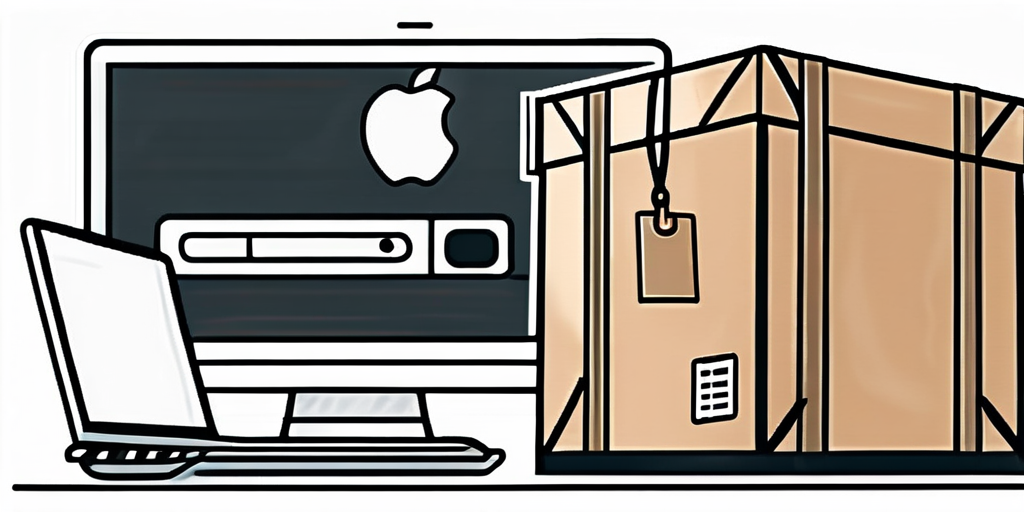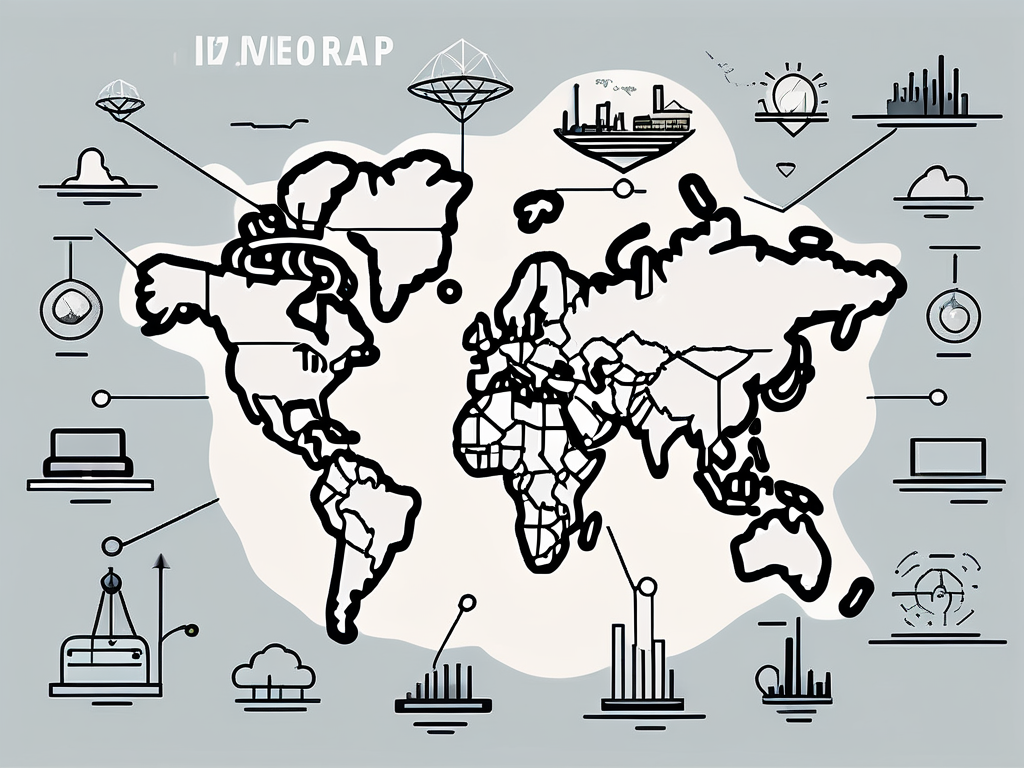Dropshipping has become an increasingly popular business model in the world of e-commerce, and one of the most lucrative niches for dropshipping is clothing. If you are looking to start your own dropshipping business and take advantage of the growing demand for fashionable clothes, you’ve come to the right place. In this ultimate guide, we will walk you through the basics of dropshipping, the process of setting up your business, and how to navigate the challenges that come with dropshipping clothes. We will also discuss effective marketing strategies to help you establish a strong brand identity and promote your dropshipping clothing store.
Understanding the Basics of Dropshipping
Defining Dropshipping
Dropshipping is a business model in which you, as the retailer, don’t need to keep any inventory. Instead, you partner with suppliers who stock the products and fulfill the orders on your behalf. This means that you don’t have to worry about storing and shipping the products, allowing you to focus on marketing and growing your business.

The Role of Dropshipping in E-commerce
Dropshipping has revolutionized the e-commerce industry by making it easy for aspiring entrepreneurs to start their own online stores. With dropshipping, you can offer a wide variety of products without the need to invest in inventory upfront. This lowers the barriers to entry and allows you to test different niches and products with minimal financial risk.
Why Choose Clothing as Your Dropshipping Niche
Clothing is a highly profitable niche for dropshipping due to its constant demand. People are always looking for trendy and stylish clothes, making it a lucrative market to tap into. Additionally, the fashion industry is constantly evolving, allowing you to take advantage of new trends and seasonal collections to attract customers.
When it comes to clothing, there are endless possibilities for you to explore within the dropshipping business model. From casual wear to formal attire, sportswear to accessories, the options are vast. By choosing clothing as your dropshipping niche, you open the door to a world of fashion and style.
One of the advantages of dropshipping clothing is the ability to offer a wide range of sizes, styles, and designs to cater to different customer preferences. Whether your target audience is looking for plus-size clothing, trendy streetwear, or elegant evening dresses, you can curate a collection that meets their needs.
Setting Up Your Dropshipping Business
Choosing the Right Platform for Your Store
Before you launch your dropshipping clothing store, you need to select the right platform to build your online store. Popular options include Shopify, WooCommerce, and BigCommerce. Each platform offers its own unique set of features and benefits, so it’s important to carefully consider your specific needs.

Shopify is known for its user-friendly interface and extensive app store, which allows you to easily customize your store and add additional functionality. WooCommerce, on the other hand, is a powerful WordPress plugin that seamlessly integrates with your existing website, making it a great choice if you already have a strong online presence. And if you’re looking for a robust and scalable solution, BigCommerce offers advanced features such as built-in SEO tools and multi-channel selling capabilities.
Identifying Your Target Market
Understanding your target market is crucial to the success of your dropshipping business. While it’s important to have a general understanding of your audience, diving deeper into their preferences, demographics, and buying behaviors can provide valuable insights that can help you make informed business decisions.
For example, if you’re targeting a younger demographic, you might want to focus on trendy and fashionable clothing items that align with their style preferences. On the other hand, if your target market consists of busy professionals, you might want to offer comfortable and versatile clothing options that can easily transition from the office to a night out.
Selecting Your Clothing Suppliers
Choosing reliable clothing suppliers is essential for the success of your dropshipping business. While there are many suppliers to choose from, it’s important to carefully evaluate each option to ensure they meet your specific requirements.
Look for suppliers that offer a wide range of stylish clothing options to cater to different customer preferences. It’s also important to consider pricing, as competitive pricing can give you a competitive edge in the market. Additionally, fast shipping times are crucial to providing a positive customer experience, so make sure to choose suppliers that can deliver products in a timely manner.
Researching supplier reviews and ratings is another important step in the supplier selection process. This will give you insights into their reputation and track record of delivering quality products and excellent customer service. By partnering with reliable suppliers, you can ensure that your customers receive the best possible experience when shopping at your store.
Navigating the Challenges of Dropshipping Clothes
Dealing with Inventory Issues
One of the biggest challenges in dropshipping clothes is managing inventory. Since you don’t control the stock, it’s vital to regularly communicate with your suppliers to ensure they have sufficient inventory. Implement systems that allow you to track stock levels and promptly update your store when products are out of stock or discontinued.
Inventory management is a delicate balancing act. On one hand, you want to ensure that you have enough products in stock to meet customer demand. On the other hand, you don’t want to be burdened with excess inventory that ties up your capital. It requires careful planning and forecasting to strike the right balance.
One effective strategy is to analyze historical sales data to identify trends and patterns. This can help you anticipate which products will be in high demand and adjust your inventory levels accordingly. Additionally, establishing strong relationships with multiple suppliers can provide you with alternative options in case one supplier faces inventory shortages.
Handling Returns and Exchanges
Returns and exchanges are inevitable in the fashion industry. Develop a clear and customer-friendly return policy that addresses common issues such as sizing discrepancies and faulty products. Communicate this policy on your website and provide excellent customer service to address any concerns your customers may have.
When it comes to returns and exchanges, it’s important to strike a balance between customer satisfaction and protecting your business. While you want to accommodate your customers’ needs, you also need to establish guidelines to prevent abuse of the return policy. Clearly define the conditions under which returns and exchanges are accepted, such as time limits and the condition of the returned items.
Furthermore, consider implementing a system that allows customers to provide feedback on their purchases. This can help you identify recurring issues and take proactive steps to address them, ultimately reducing the number of returns and exchanges in the long run.
Ensuring Quality Control
As a dropshipper, you rely on your suppliers to fulfill orders and maintain product quality. However, it’s essential to perform periodic quality checks to ensure that the products meet your customers’ expectations. Establish a good relationship with your suppliers and provide feedback to address any quality issues promptly.
Quality control is crucial in the fashion industry, where attention to detail and craftsmanship are highly valued. Regularly inspecting samples from your suppliers can help you catch any potential issues before they reach your customers. This can include checking for stitching quality, fabric durability, and overall product finish.
Additionally, consider conducting random product inspections upon delivery to ensure consistency in quality. This can help you identify any deviations from your standards and work with your suppliers to rectify them. By maintaining a strong focus on quality control, you can build a reputation for delivering high-quality products and gain the trust of your customers.
Marketing Your Dropshipping Clothing Store
Building a Strong Brand Identity
In a highly competitive industry like clothing, having a strong brand identity is crucial for standing out from the crowd. Develop a unique brand story, logo, and website design that reflects your values and target audience. Invest in professional product photography and establish a consistent brand voice across all your marketing channels.

When it comes to building a strong brand identity, it’s important to go beyond just the visuals. Consider the emotions and experiences you want your customers to associate with your clothing store. Are you aiming for a sense of luxury and exclusivity, or do you want to create a more casual and approachable vibe? Understanding your target audience and their preferences will help you craft a brand identity that resonates with them on a deeper level.
Additionally, don’t underestimate the power of storytelling. Share the inspiration behind your clothing line, the craftsmanship that goes into each piece, or the social causes you support. By weaving these narratives into your brand story, you can create a stronger connection with your customers and differentiate yourself from competitors.
Utilizing Social Media for Promotion
Social media platforms like Instagram and Facebook provide excellent opportunities to promote your dropshipping clothing store. Use engaging visuals, influencer partnerships, and compelling ad copy to drive traffic to your online store. Consider hosting giveaways, sharing user-generated content, and leveraging social media algorithms to expand your reach.
However, simply having a presence on social media is not enough. To truly make an impact, you need to understand the unique dynamics of each platform and tailor your content accordingly. For example, Instagram is highly visual, so focus on creating stunning imagery that showcases your clothing line. On the other hand, Facebook allows for longer-form content, so take advantage of that by sharing behind-the-scenes stories or informative videos.
Furthermore, don’t limit yourself to just the popular social media platforms. Explore niche communities and forums where your target audience hangs out. Engage in meaningful conversations, offer valuable advice, and establish yourself as an authority in the industry. By building genuine relationships with potential customers, you can drive traffic to your dropshipping clothing store in a more organic and authentic way.
Implementing Effective SEO Strategies
Search engine optimization (SEO) plays a vital role in driving organic traffic to your dropshipping clothing store. Conduct keyword research to identify relevant search terms with high search volume and low competition. Optimize your website’s meta tags, product descriptions, and blog content to increase your chances of ranking higher in search engine results.
However, SEO is not just about stuffing your website with keywords. It’s about creating valuable and informative content that caters to the needs of your target audience. Consider creating a blog where you can share fashion tips, style guides, and industry insights. By providing valuable content, you not only attract more visitors to your website but also establish yourself as a trusted resource in the fashion community.
Additionally, don’t forget about the importance of user experience. Make sure your website is mobile-friendly, loads quickly, and has intuitive navigation. A seamless and enjoyable browsing experience not only improves your chances of ranking higher in search engine results but also increases the likelihood of visitors converting into customers.
By following this ultimate guide to dropshipping clothes, you are well on your way to building a successful online business. Remember to continually adapt your strategies, stay on top of industry trends, and provide exceptional customer service to create a sustainable and profitable dropshipping clothing store.


